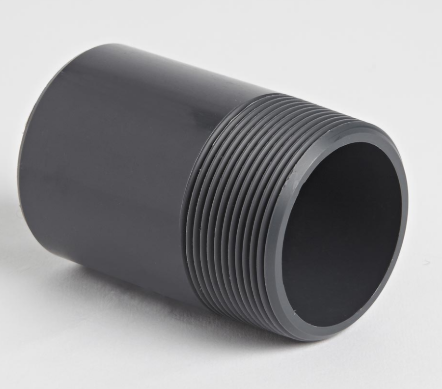When it comes to machining thermoplastic materials, two of the most common options are PVC and polycarbonate. Both materials have unique properties and characteristics that make them suitable for various applications. In this article, we’ll compare PVC machining vs. polycarbonate machining and discuss the key differences between them.

Polycarbonate Vs PVC Machining
PVC CNC Machining
PVC, or Polyvinyl Chloride, is a rigid plastic material that is widely used in construction, plumbing, and electrical applications. It’s easy to machine, making it a popular choice for CNC machining. However, PVC is also more susceptible to heat damage than other thermoplastic materials, such as polycarbonate.
During machining, PVC can quickly heat up, causing it to melt and warp. To prevent this, it’s important to use a lower cutting speed and take frequent breaks to allow the material to cool down. Using a coolant can also help to reduce the heat generated during the machining process.
PVC is also more likely to produce dust and shavings during machining than other materials, which can create a mess and require additional cleanup.
Polycarbonate CNC Machining
Polycarbonate is a more flexible and durable plastic that is commonly used in applications that require impact resistance and clarity, such as safety glasses, electronic components, and automotive parts. Machining polycarbonate requires more specialized techniques than PVC machining, but it is still a popular material for CNC machining.
When machining polycarbonate, it’s essential to use a lower spindle speed and higher feed rate to prevent chipping and cracking. The lower spindle speed reduces the amount of heat generated during the machining process, while the higher feed rate ensures that the material is being removed quickly enough to prevent the buildup of heat. Machining polycarbonate also produces fewer shavings and dust than PVC, making it a cleaner material to work with.
Polycarbonate is more heat-resistant than PVC, which means it can be machined at higher temperatures without the risk of melting. However, it’s still important to monitor the temperature of the material and take frequent breaks to allow it to cool down.
Comparison Between PVC & Polycarbonate CNC Parts
The main difference between PVC and polycarbonate machining is the heat sensitivity of the materials. PVC is more susceptible to heat damage and requires more careful machining techniques to avoid melting and warping. Polycarbonate, on the other hand, is more heat-resistant and can be machined at higher temperatures without the risk of melting.
PVC is also more likely to produce dust and shavings during machining than polycarbonate, making it messier to work with. Polycarbonate, on the other hand, produces fewer shavings and dust, making it a cleaner material to machine.
In terms of applications, PVC is often used for construction and electrical applications, while polycarbonate is commonly used for safety glasses, electronic components, and automotive parts.
Is Polycarbonate More Expensive Than PVC for CNC Machining?
Yes, polycarbonate is generally more expensive than PVC for CNC machining. The cost of polycarbonate is influenced by several factors, such as the quality, thickness, and quantity required. Additionally, the specialized techniques required for machining polycarbonate can increase the overall cost of the machining process.
PVC, on the other hand, is a more affordable material for CNC machining. It’s widely available and easy to machine, which makes it a popular choice for many applications. The low cost of PVC makes it a good option for applications where affordability is important.
In summary, polycarbonate and PVC are two common thermoplastic materials used for CNC machining. While both materials have their advantages and disadvantages, the choice between polycarbonate and PVC for CNC machining will depend on the specific requirements of the application. Factors such as mechanical properties, environmental conditions, and budget should be considered when choosing between these materials for CNC machining.